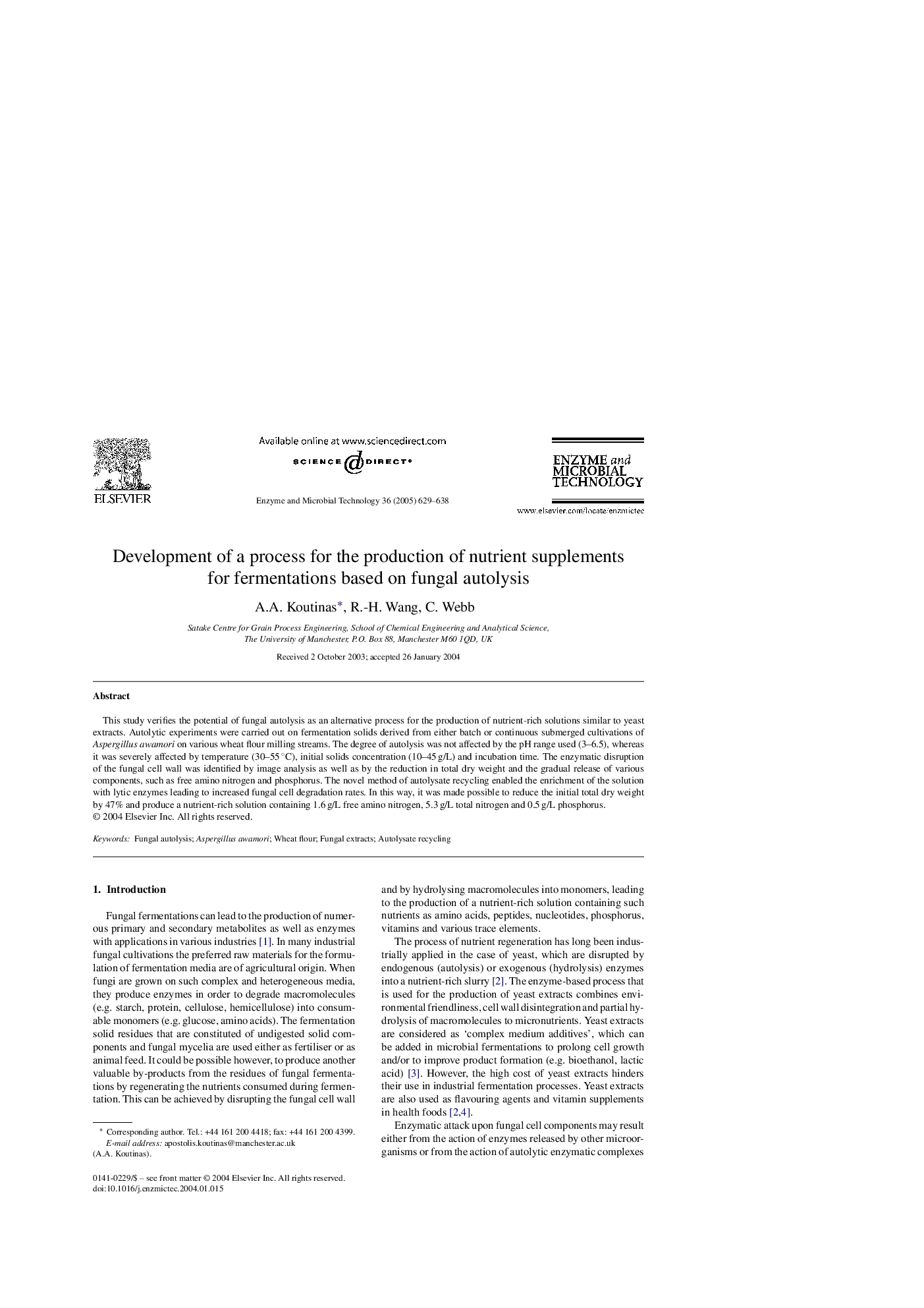| Article ID | Journal | Published Year | Pages | File Type |
|---|---|---|---|---|
| 9602635 | Enzyme and Microbial Technology | 2005 | 10 Pages |
Abstract
This study verifies the potential of fungal autolysis as an alternative process for the production of nutrient-rich solutions similar to yeast extracts. Autolytic experiments were carried out on fermentation solids derived from either batch or continuous submerged cultivations of Aspergillus awamori on various wheat flour milling streams. The degree of autolysis was not affected by the pH range used (3-6.5), whereas it was severely affected by temperature (30-55 °C), initial solids concentration (10-45 g/L) and incubation time. The enzymatic disruption of the fungal cell wall was identified by image analysis as well as by the reduction in total dry weight and the gradual release of various components, such as free amino nitrogen and phosphorus. The novel method of autolysate recycling enabled the enrichment of the solution with lytic enzymes leading to increased fungal cell degradation rates. In this way, it was made possible to reduce the initial total dry weight by 47% and produce a nutrient-rich solution containing 1.6 g/L free amino nitrogen, 5.3 g/L total nitrogen and 0.5 g/L phosphorus.
Related Topics
Physical Sciences and Engineering
Chemical Engineering
Bioengineering
Authors
A.A. Koutinas, R.-H. Wang, C. Webb,
